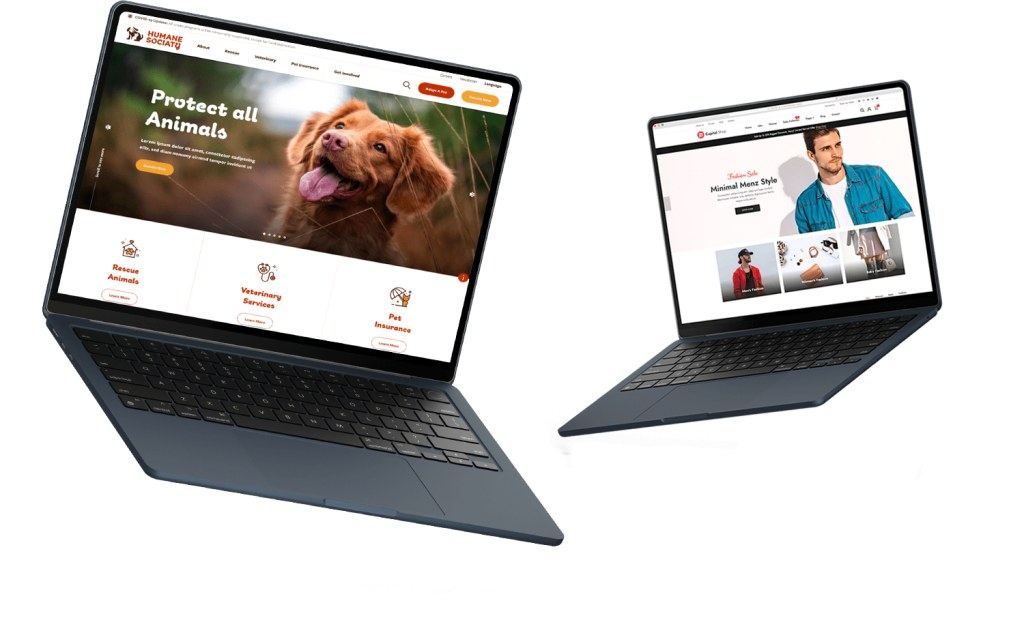Utilizing Webinars and Demos as Lead Generation Tools for Your New Software

When launching a new software product, generating qualified leads can be one of the most challenging aspects of your marketing strategy. However, you may perfectly attract, engage & convert prospects with the right tools and tactics. One of the most powerful strategies to generate leads for newly developed software is through Webinars and Demos as Lead Generation Tools. These two tools offer a unique and interactive approach to lead generation. Webinars provide an opportunity to educate many prospects, while demos allow for more personalized one-on-one engagement. Together, they can help you build relationships with potential customers, showcase the value of your software, and ultimately drive conversions. Let’s find out how to use webinars & demos as lead generation tools for your new software. The Power of Webinars in Lead Generation Webinars are to capture attention, arrange valuable content, & engage with your possible customers. Unlike traditional marketing methods, webinars allow direct interaction with your audience, making them an excellent platform for educating and nurturing leads. Why Webinars Work for Software Lead Generation Best Practices for Hosting Successful Webinars Leveraging Product Demos for Lead Generation Product demos offer a more personalized way to connect with leads. Unlike webinars, which can reach a broader audience, demos are typically one-on-one sessions that provide a tailored experience based on the prospect’s unique needs. They allow you to dive deeper into how your software can address specific pain points, increasing the likelihood of conversion. Why Product Demos Matter for Software Lead Generation Tips for Conducting an Effective Product Demo Combining Webinars and Demos for Maximum Lead Generation Impact While webinars and product demos are powerful lead generation tools, combining them can be even more effective. Here’s how: Conclusion Webinars & product demos are the two major lead generation strategies for any software. By leveraging these tools, you can engage with prospects meaningfully, showcase your software’s value, and ultimately drive conversions. Whether hosting a large-scale webinar or conducting a personalized demo, these strategies will help you build trust, establish credibility, and turn leads into loyal customers. At Speed Dot 360, we understand the importance of engaging with your audience in real-time. If you want to enhance your software’s lead generation strategy, we can help you implement successful webinar and demo strategies tailored to your unique needs. Start using webinars and demos to boost your lead generation efforts today and see the difference they can make for your business. FAQs 1. Why are webinars an effective lead generation tool? Answer: Webinars provide real-time interaction with prospects, allowing you to showcase your software’s value, answer questions, and build trust. They connect directly with your audience, making converting them into qualified leads easier. 2. How do product demos help generate software leads? Answer: Product demos offer a personalized experience, allowing you to address specific pain points and showcase the software’s benefits in real-time. They help build trust, engage prospects, and increase the likelihood of conversion. 3. How long should a webinar or demo last? Answer: Webinars should typically last between 30 and 60 minutes, while product demos should be around 15 to 30 minutes, depending on the complexity of the software. 4. What’s the best way to promote my webinar or demo? Answer: Promote your webinar or demo through email marketing, social media, paid ads, and your website. Ensure to highlight the key benefits of attending and create a sense of urgency with limited spots or exclusive content. 5. Should I offer a free trial after a demo or webinar? Answer: Yes, offering a free trial after a demo or webinar is an excellent way for leads to experience your software firsthand. It provides them with a risk-free way to explore your product and increases the chances of conversion.
AI-Driven Personalization for Offers & Ads: Transforming Digital Marketing with Speed Dot 360

Customers expect experiences tailored to their unique interests, preferences, and behaviors in today’s crowded digital landscape. Generic offers and one-size-fits-all ads don’t cut it anymore. Businesses must deeply understand individual customers and engage them with highly relevant, timely, and meaningful messages. This is where AI-driven personalization has turned out to be the biggest game-changer. With AI-powered personalization for offers and ads, brands can go beyond basic targeting and deliver marketing experiences that feel truly individualized. This technology combines big data analytics, machine learning (ML), and predictive intelligence to ensure every ad, discount, or recommendation resonates with the right person at the right time. As a forward-thinking digital partner, Speed Dot 360 implements cutting-edge solutions, enabling businesses to stay competitive in the ever-evolving marketing space. Let’s explore how AI-driven personalization reshapes offers and ads and why adopting this approach through Speed Dot 360 can help your brand stay ahead. What is AI-Driven Personalization? AI-driven personalization uses artificial intelligence to analyze customer data, predict behavior, and deliver hyper-targeted content, offers, and ads across digital channels. Unlike traditional segmentation methods that rely on demographic information alone, AI personalization uses real-time behavioral data, past interactions, and predictive analytics to deliver tailored experiences. Some standard personalization techniques powered by AI include: The result? Ads and offers that feel personal, increase engagement, and drive conversions. Why Businesses Can’t Ignore AI Personalization Consumer expectations have changed dramatically. According to multiple industry studies, over 70% of customers expect personalized experiences when interacting with brands, and 90% of marketers report measurable business improvements when personalization is executed effectively. Here are some key reasons why businesses can no longer afford to ignore AI-driven personalization: 1. Improved Customer Experience AI enables brands to deliver timely, relevant, and valuable content, which enhances the overall customer experience. People respond better when they feel understood. 2. Higher Conversion Rates Customized recommendations & offers have been shown to enhance conversions perfectly. Personalized ads reduce noise and make offers more appealing. 3. Better ROI on Ad Spend Instead of wasting money on irrelevant impressions, AI ensures ads reach users most likely to convert, maximizing the return on every marketing dollar. 4. Real-Time Adaptability AI can analyze user interactions in real time and adjust campaigns instantly for maximum impact. 5. Competitive Advantage Early adopters of AI personalization stand out in the market, gaining loyalty and long-term customers before competitors catch up. How AI Personalization Works: Behind the Scenes AI-driven personalization relies on several advanced technologies working together. Let’s break it down: This entire cycle runs continuously, allowing businesses to adapt campaigns on the fly. AI Techniques Powering Personalized Ads & Offers AI uses several powerful techniques to achieve personalization at scale: Real-Time Data: The Secret to AI Personalization Success Real-time data is the backbone of effective AI-driven personalization. It ensures that offers and ads remain contextually relevant at all times. For instance: This level of instant personalization is impossible with traditional methods but routine for AI-powered systems. Industry Trends in AI-Driven Personalization AI personalization is improving with several trends that are shaping its future: How Speed Dot 360 Helps Businesses Implement AI-Driven Personalization At Speed Dot 360, we understand that implementing AI-driven personalization can feel overwhelming for businesses. That’s why we offer end-to-end solutions to make the transition seamless: With our expertise, businesses can maximize ROI, improve customer engagement, and stay competitive in the digital landscape. Case Example: E-Commerce Personalization An e-commerce brand partnered with Speed Dot 360 to deploy AI personalization across its marketing channels. Within three months: Real-time personalized recommendations, dynamic email offers, and AI-optimized ad placements drove this success. Conclusion AI-driven personalization for offers and ads isn’t just a marketing trend—it’s the future of customer engagement. Businesses that embrace this technology will enjoy higher conversions, better customer relationships, and improved ROI. Partnering with Speed Dot 360 ensures you stay ahead with cutting-edge AI tools, expert strategies, and measurable results. FAQs 1. What is AI-driven personalization for offers and ads?It uses AI technologies like machine learning and predictive analytics to deliver highly relevant ads and offers tailored to customers’ behavior and preferences. 2. How does AI improve ad performance?By analyzing data and predicting user behavior, AI ensures ads reach the right people at the right time with the right message. 3. Is AI personalization suitable for small businesses?Even small businesses can benefit from affordable AI tools that boost engagement and conversions. 4. How does Speed Dot 360 help with AI personalization?We offer end-to-end AI solutions for data integration, campaign optimization, and personalized content creation. 5. What industries can benefit from AI-driven personalization?E-commerce, finance, healthcare, travel, and virtually any industry aiming to enhance customer experiences can benefit.
Sustainable DevOps: Green Software Practices for a Cleaner Digital Future

In today’s highly tech-savvy online landscape, companies deliver software quicker than ever. The rise of DevOps—a methodology combining software development (Dev) and IT operations (Ops)—has revolutionized how businesses launch, manage, and scale digital products. However, this speed and efficiency come at a hidden cost: energy consumption, carbon emissions, and increased environmental impact. As the world shifts toward sustainability, Sustainable DevOps or Green Software Practices has emerged as a powerful solution for organizations aiming to minimize their carbon footprint while maintaining high performance. At SpeedDot360, we understand that embracing sustainability in DevOps isn’t just about reducing energy consumption—it’s about building a responsible digital future. This blog explores sustainable DevOps, outlines practical green software practices, and highlights how SpeedDot360 can help businesses adopt eco-conscious digital solutions without compromising innovation or efficiency. The Environmental Impact of Traditional Software Development The digital world often feels invisible—you can’t touch software. Yet behind every application, website, or e-commerce platform lies an enormous digital infrastructure consuming significant energy. Traditional DevOps focuses primarily on speed and automation. But today, businesses cannot ignore the environmental implications. That’s where Sustainable DevOps comes into play—aligning technological growth with ecological responsibility. What is Sustainable DevOps? Sustainable DevOps integrates green computing principles into every stage of the DevOps lifecycle—from planning and coding to testing, deployment, and monitoring. It focuses on three key goals: Unlike traditional DevOps, which mainly emphasizes speed and scalability, Sustainable DevOps adds a layer of environmental consciousness without compromising performance. It’s about achieving balance—delivering quality software while keeping sustainability at the core. At SpeedDot360, the future belongs to companies that combine innovation with responsibility. Our development team integrates green software practices into every project, helping businesses meet sustainability goals while staying competitive. Core Green Software Practices in Sustainable DevOps Adopting Sustainable DevOps requires more than just intent—it demands a practical framework and modern tools. Below are key green software practices businesses can implement with SpeedDot360’s expertise: 1. Cloud Optimization & Serverless Computing Shifting workloads to serverless architectures ensures that computing power is used only when needed. Instead of keeping servers running constantly, serverless platforms scale automatically, reducing idle energy consumption. At SpeedDot360, we help businesses migrate to cloud-native and serverless ecosystems, ensuring maximum efficiency with minimal energy waste. 2. Code Efficiency & Lightweight Frameworks Poorly optimized code consumes more CPU power, leading to higher energy usage. Writing clean, efficient, and reusable code ensures applications run smoothly with lower processing needs. Our development team at SpeedDot360 uses modern frameworks and coding best practices to build lightweight yet powerful applications, improving both performance and sustainability. 3. CI/CD Pipelines with Energy Monitoring Tools Continuous Integration and Continuous Deployment (CI/CD) pipelines often involve multiple build, test, and deploy cycles. By integrating energy monitoring tools into these pipelines, companies can measure and optimize energy consumption at every stage. SpeedDot360 incorporates tools that provide real-time insights into energy usage, allowing businesses to make data-driven sustainability decisions. 4. Automated Scaling & Resource Scheduling Many applications run at full capacity even during low-traffic periods, wasting energy. With auto-scaling and resource scheduling, workloads can be distributed based on demand, reducing unnecessary energy consumption. SpeedDot360 enables smart resource allocation, ensuring systems operate efficiently around the clock. 5. Infrastructure-as-Code (IaC) with Green Principles Using IaC tools like Terraform or Ansible, infrastructure can be designed for optimal energy efficiency. SpeedDot360 helps businesses adopt IaC practices with a sustainability-first mindset, creating leaner infrastructure deployments. Tools and Technologies for Sustainable DevOps Implementing green DevOps requires the right technologies. Some popular tools include: SpeedDot360 ensures clients use the best combination of tools tailored to their sustainability goals and technical requirements. Business Benefits of Going Green with DevOps Adapting to Sustainable DevOps practices is not just perfect for the environment—it ensures measurable business benefits: By partnering with SpeedDot360, businesses achieve green IT practices and gain a competitive edge in the digital marketplace. How SpeedDot360 Leads in Sustainable DevOps At SpeedDot360, we deliver cutting-edge digital solutions while staying committed to sustainability. Our expertise spans: Every solution we deliver is built on principles of efficiency, scalability, and responsibility. Whether you want to optimize cloud usage, automate workflows, or reduce operational costs, SpeedDot360 ensures technology works for your business—and the planet. Future Trends in Sustainable DevOps The future of Sustainable DevOps will witness: SpeedDot360 stays ahead of trends, helping businesses confidently embrace next-gen sustainable technologies. Conclusion: Build a Cleaner Digital Future with SpeedDot360 Sustainable DevOps isn’t just a trend—it’s necessary for businesses aiming to thrive in a world demanding environmental responsibility. Companies can minimize their carbon footprint, cut costs, and build a positive brand image by adopting green software practices. At SpeedDot360, we merge innovation with sustainability, offering businesses the tools, expertise, and strategies to create eco-conscious digital solutions without sacrificing performance or profitability. Ready to go green with your DevOps strategy? Contact SpeedDot360 today and take the first step toward a cleaner, brighter, more sustainable digital future. FAQs on Sustainable DevOps 1. What is Sustainable DevOps?Sustainable DevOps combines DevOps practices with green computing principles to minimize energy usage and carbon emissions. 2. How does green software reduce costs?Efficient resource utilization lowers energy bills, cloud costs, and operational expenses. 3. Can existing systems be optimized for sustainability?Yes, SpeedDot360 helps modernize legacy systems with eco-friendly solutions. 4. What tools support Sustainable DevOps?Tools like Kubernetes, Terraform, and Prometheus enable energy-efficient workflows.5. Why choose SpeedDot360 for green DevOps?Because we deliver performance-driven, eco-conscious solutions tailored to your business needs.
Generative Engine Optimization (GEO): Ensuring Your Brand is Cited by AI

As generative AI tools become mainstream, businesses face a new challenge: ensuring their brand appears when AI systems like ChatGPT, Google Gemini, and other large language models (LLMs) generate content. The old rules of search engine optimization (SEO) are no longer enough because search engines are no longer the only way people get information. Today, Generative Engine Optimization (GEO) is emerging as the next big thing in digital marketing, helping brands secure visibility in AI-generated summaries, answers, and content recommendations. This guide explores everything businesses need to know about GEO—what it is, why it matters, and the practical steps you can take to ensure your brand is cited when AI delivers results to users worldwide. What is Generative Engine Optimization (GEO)? Generative Engine Optimization, or GEO, refers to optimizing content so that generative AI systems recognize, trust, and reference it when producing answers or creating content. Unlike typical SEO, which targets the ranking in search results, GEO plans to build topical authority, AI-centric signals and structured content, allowing AI modes to: In simple terms, while SEO gets you visibility on Google or Bing, GEO helps your brand stay visible in the AI-powered digital future. Why GEO Matters in 2025 and Beyond The digital landscape is evolving fast. Millions of people now rely on AI-powered assistants for product recommendations, research, and answers to everyday questions. That means: Ignoring GEO today might be the same as neglecting SEO in the early 2000s—a missed opportunity that competitors will capitalize on. Key Strategies for Effective Generative Engine Optimization To make GEO successful, you need to adapt strategies designed for AI-powered methods rather than just search engines. Let’s go through the following significant steps: 1. Use llms.txt to Guide AI Models Just as sites use robots.txt to guide search engines, LLMs.txt files are made to communicate with the large language models (LLMs). By generating this file, you can: Adding an llms.txt file ensures AI tools understand your brand’s content structure and citation policies. 2. Implement AI-Friendly Metadata Metadata is information embedded in your content that helps search engines and AI models understand context. For GEO, you need to: This makes it easier for AI tools to recognize your content as authoritative and reliable. 3. Structured Data and Schema Markup Generative AI systems prefer structured, organized information. Schema markup guides AI about the specific meaning of your content, not just what it reveals. For instance: The more context you ensure, the easier it is for AI to reference your brand perfectly. 4. Build Clear Topical Authority AI tools rely on credible sources when it is to create answers. To become one: When AI sees your brand as a trusted expert in a particular subject area, it is likelier to cite you in responses. 5. Create AI-Friendly Content Formats Generative AI prefers concise, well-structured information. That means: The easier it is for AI to read your content, the more likely it will appear in AI-generated answers. 6. Monitor AI Citations and Mentions GEO doesn’t end with publishing content—you need to track when and how AI tools reference your brand. This data helps you fine-tune your content strategy. Future Trends in Generative Engine Optimization The field of GEO is still new, but here’s what we can expect in the coming years: How Businesses Can Get Started with GEO If you’re new to Generative Engine Optimization, here’s a roadmap: Conclusion Generative Engine Optimization isn’t just a passing trend—it’s the future of digital visibility. As AI tools increasingly shape how users find information, businesses that optimize for AI citations and discoverability will have a significant competitive advantage. By implementing llms.txt, using structured data, building topical authority, and publishing AI-friendly content, your brand can stay ahead in the evolving digital era. FAQs 1. How is GEO different from traditional SEO?GEO optimizes content for AI-generated results, while SEO is all about improving a ranking in search results on all the search engines. 2. Do all businesses need to adopt GEO strategies?Yes, especially brands that rely on digital visibility for leads, sales, or thought leadership should start investing in GEO. 3. What is llms.txt, and why is it important?llms.txt is a file that communicates with AI models, telling them how to access and cite your content. 4. How soon will GEO become mainstream?With the rapid adoption of AI tools in 2025, GEO is expected to become a core part of digital marketing within the next 1–2 years.5. Can GEO improve website traffic directly?Indirectly, yes. If AI tools consistently mention your brand, users will search for you directly or visit your site after seeing your brand cited as an authority.
Checklist for Marketing Audit for Roofers: Boost Leads, Visibility & ROI

In today’s saturated digital landscape, roofing companies must do more than just “show up online.” To grow leads, close more jobs, and gain local dominance, you need a strategic and measurable approach. That’s where a well-structured marketing audit comes into play. Whether you’re working with a local SEO agency or managing marketing in-house, conducting a thorough audit will help identify gaps, enhance performance, and align your efforts with real business goals. This guide walks you through the essential checklist every roofer needs to evaluate marketing effectiveness—from SEO and content to advertising and conversion paths. 1. Define Your Marketing Goals Before diving into audits, establish clear, measurable goals. Are you trying to generate more leads? Rank higher on Google? Improve your online reputation? Your marketing audit will be most effective if it’s tied to specific KPIs such as: 2. Evaluate Your Branding and Online Reputation Your brand is your promise to customers—and consistency is key. Roofing is a high-trust industry. That’s why a strong, visible, and reputable brand is essential for converting leads. Audit checklist: ORM plays an important role in both customer conversion and SEO optimization services. 3. Conduct a Website & Technical SEO Audit Your website is your 24/7 salesperson. It needs to be fast, user-friendly, and built to convert. A technical SEO audit ensures that search engines can crawl, index, and rank your site in the best possible manner. Key technical areas to audit: Tools like Google Search Console, SEMrush, and Screaming Frog can help identify technical issues that hurt rankings. 4. Review On-Page SEO Strategies On-page optimization is where you control the keywords, structure, and relevance of your content. A strong on-page SEO strategy ensures your site speaks the language of users and search engines. Audit questions to ask: Well-executed on-page SEO strategies increase visibility, improve user experience, and ultimately drive more qualified traffic. 5. Strengthen Off-Page SEO Solutions While on-page SEO builds a solid foundation, off-page SEO solutions help you gain authority in Google’s eyes through backlinks, local citations, and brand mentions. Key off-page audit items: Use tools like Ahrefs or Moz to analyze your backlink profile and eliminate toxic links. 6. Analyze Content Marketing Effectiveness Roofers who educate their customers with useful content build trust and stay top-of-mind. Blog articles, FAQs, and project showcases can attract and nurture leads when optimized well. Content audit checklist: Great content also fuels your email, SEO, and social media strategies. It’s the engine that powers long-term growth. 7. Review Email Marketing Campaigns Not all roofing leads are ready to convert immediately. That’s why email marketing campaigns are so effective—they nurture leads over time and drive repeat business. Audit your email efforts by reviewing the following: Whether it’s a monthly newsletter or post-project follow-up, email keeps your brand top-of-mind and builds long-term customer loyalty. 8. Audit Paid Advertising & PPC Campaigns Are your Google Ads and Facebook campaigns bringing in qualified roofing leads—or just eating up your budget? Checklist for PPC audit: Properly audited and optimized ads can dramatically improve cost-per-lead and ROI. 9. Review Lead Tracking & CRM Systems It’s not enough to drive traffic—you need to know where leads come from and how they convert. A CRM ensures that no opportunity falls through the cracks. Audit points: Lead tracking and attribution help roofing contractors make informed budgeting decisions. 10. Evaluate Social Media Presence Social media might not be your #1 lead driver, but it’s essential for credibility and community engagement—especially for local roofers. Audit your social media by asking: Social proof matters. Homeowners want to see that you’re active, professional, and relatable. 11. Competitor Comparison Finally, compare your performance to the top roofing contractors in your area. This gives you a sense of where you stand—and where you can gain ground. Use competitive research tools to analyze: A marketing audit isn’t complete without knowing how you stack up. 12. Work With the Right Partner A DIY audit can go a long way—but having experts like SpeedDot360 in your corner takes things further. From professional technical SEO audits to custom email marketing campaigns, we help roofers uncover blind spots, fix inefficiencies, and scale with precision. Whether you’re a startup contractor or an established roofing company, SpeedDot360 offers tailored solutions for lead generation, local visibility, and long-term growth. Conclusion A successful roofing business starts with a powerful marketing foundation. By following this marketing audit checklist, you’ll uncover actionable insights to boost traffic, conversions, and your bottom line. Regular audits—ideally every 6 to 12 months—will keep your strategy fresh, focused, and ahead of the competition. Don’t just spend money on marketing. Make sure every dollar is working as hard as you do on the roof. Ready to unlock the full potential of your roofing marketing? Contact SpeedDot360 today for a free consultation and start building a smarter, results-driven marketing strategy.
Pros & Cons of Using Artificial Intelligence in Marketing

Artificial Intelligence (AI) has moved from being a futuristic concept to a vital part of marketing today. Businesses now use AI to automate tasks, analyze consumer behavior, and optimize advertising strategies—faster and smarter than ever before. With the help of artificial intelligence solutions, marketers can transform how they target, engage, and convert audiences. However, while AI brings undeniable benefits, it also comes with some limitations that every business should carefully consider. In this blog, we’ll explore the top advantages and disadvantages of using AI in marketing and help you decide how to integrate it into your own business strategy. Using Artificial Intelligence in Marketing 1. Advantage: Hyper-Personalization at Scale One of the most impactful uses of AI in marketing is its ability to give personalized experiences to customers at scale. This kind of personalization increases engagement, boosts ROI, and builds customer loyalty—especially when paired with automated tools like AI-driven CRMs or smart content platforms. 2. Disadvantage: Data Privacy and Ethical Concerns AI’s effectiveness hinges on data—but that data often includes sensitive customer information. To responsibly use AI, businesses must invest in transparent data practices and strong cybersecurity protocols. 3. Advantage: Enhanced Efficiency Through Automation AI can dramatically streamline repetitive tasks, saving both time and resources. This enables marketing team players to focus on strategy, creativity, and growth rather than executional bottlenecks. 4. Disadvantage: Loss of Human Touch While AI can automate and personalize, it lacks the nuance and empathy of human interaction. For best results, AI should enhance—not replace—human creativity and oversight. 5. Advantage: Predictive Analytics for Smarter Decisions AI systems can analyze trends and predict future outcomes based on historical data. When aligned with CRM integration services, predictive analytics can ensure both sales and marketing are working in harmony. 6. Disadvantage: High Initial Investment and Maintenance Advanced AI solutions may require significant up-front investment. Smaller businesses often benefit from third-party platforms or digital transformation consulting instead of building solutions from scratch. 7. Advantage: 24/7 Customer Service with AI Chatbots AI-powered chatbots are now a standard in digital marketing for good reason. Agencies offering chatbot development services enable businesses to keep communication open day and night—without overburdening staff. 8. Disadvantage: Lack of Contextual Understanding Chatbots and AI assistants often fail when conversations go off-script. A hybrid model—using chatbots for Tier 1 support and humans for escalation—tends to perform best. 9. Advantage: Scalable Content Creation AI writing tools can produce emails, headlines, product descriptions, and social media posts at scale. This scalability is ideal for large campaigns or brands using content-heavy strategies like automated email marketing campaigns or social posts. 10. Disadvantage: Content Overload and Duplication With so many companies using AI for content creation, there’s a risk of saturation. Always pair AI-generated content with human editing to maintain tone, voice, and authenticity. 11. Advantage: Real-Time Data and Performance Tracking AI can track campaign results in real time and adjust tactics accordingly. These capabilities are essential for fast-moving industries and help businesses remain agile. 12. Disadvantage: Complexity and Lack of Transparency Some AI tools, especially black-box models, don’t provide insight into how decisions are made. Whenever possible, choose AI systems with explainability or transparent frameworks. Final Thoughts: Is AI in Marketing Worth It? Yes—when used thoughtfully. Artificial Intelligence offers tremendous benefits to marketing teams: scalability, efficiency, insights, and automation. But the technology is not flawless. It requires oversight, strategic implementation, and a strong ethical foundation. For companies new to AI or seeking support, SpeedDot360 offers expert services, including: AI is a tool—and like all tools, its value depends on how you use it. Leverage it wisely, and it can become one of your most powerful marketing assets.
Social Media as a Search Engine: Will Social Media Replace Google Search?
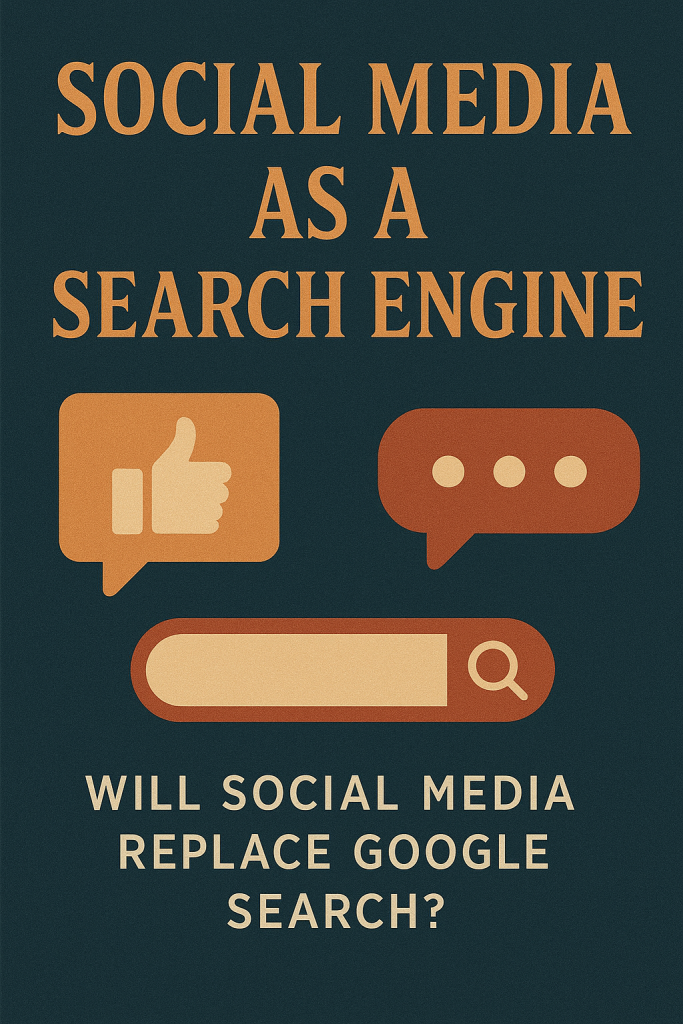
In the digital age, we have seen how social media management has evolved from a simple communication tool to a powerhouse that shapes the way people interact, consume content, and even make purchasing decisions. Platforms like Facebook, Instagram, and LinkedIn are not just social networking sites; they are becoming the new search engines for millions of users. This raises an interesting question: will social media replace Google Search as the primary way people seek information online? In this blog, we will discover the rising effect of social media platforms as search engines, their advantages and disadvantages over traditional search engines, and whether social media is truly poised to replace Google in the near future. The Rise of Social Search The move from traditional search engines to social media platforms for discovering information has been growing steadily over the past few years. What started as an alternative to searching through Google or Bing for product recommendations, local services, and even news updates has now become a norm, especially for younger generations. Facebook ad campaigns, Instagram marketing services, and even LinkedIn advertising solutions have proven to be successful methods of reaching targeted audiences, but they also highlight the trend of integrating search-like features directly within social media platforms. For many people, social media has already become a go-to tool for finding relevant content. Whether they are looking for new fashion trends, tech gadgets, restaurant reviews, or advice on how to do a task, they now turn to social networks like Instagram, TikTok, or Twitter to get these answers. This “social search” behavior shows that social platforms are offering a more personalized, visual, and engaging way of browsing compared to traditional search engines. Why Social Media is Gaining Popularity as a Search Tool 1. Visual Search One of the key reasons people are shifting to social media for searches is the rise of social media content creation, particularly in the form of visual content. Social platforms like Instagram, TikTok, and Pinterest are inherently visual, which makes them ideal for users who want to see, rather than just read, their search results. A simple scroll through Instagram or Pinterest provides a wealth of images, videos, and tutorials that are far more engaging than traditional text-based search results. 2. User-Generated Content (UGC) Another advantage of social media is the wealth of user-generated content (UGC) that can be a better resource for some search queries than professional websites. Reviews, personal experiences, and recommendations shared by users themselves often carry more weight than product descriptions on a company website. This is why social media platforms have become so crucial for product discovery and decision-making. Whether it’s watching a TikTok video on a new kitchen gadget or reading Instagram stories about a local business, UGC is an essential part of the social search experience. This is where Facebook ad campaigns and Instagram marketing services provide businesses with a unique opportunity to showcase their products or services in a way that feels personal and authentic to the consumer. 3. Real-Time, Trending Content Social media platforms are fast-paced and constantly updating with the latest trends and conversations. The Facebook ad campaigns and content on Instagram or Twitter are updated in real time, meaning users have access to relevant content that may not be immediately available on traditional search engines. The immediacy and up-to-the-minute updates offered by social platforms are critical in today’s fast-moving world of news and information. For example, when a new product or service launches, people may turn to Instagram or TikTok first to see real-world demonstrations and reviews rather than searching Google for articles. This sense of instant gratification is something Google can struggle to match, making social platforms more appealing for quick searches. 4. Personalized Search Results Search results on social media are highly personalized based on the user’s interests, past behavior, and even their social circles. Facebook, Instagram, and LinkedIn all use algorithms to tailor content to users, meaning the information you see is often more aligned with your preferences. This contrasts with Google’s approach, which primarily relies on keywords, backlinks, and SEO to determine search rankings. Social media platforms, on the other hand, allow for a deeper, more personalized search experience. For instance, if you’re researching a new city to move to, Instagram’s location-based search feature can show you relevant posts from local residents, giving you insight into what it’s really like to live there. Similarly, LinkedIn advertising solutions can direct you to posts and articles from industry professionals that might be more valuable than a generic Google search result. Social Media vs. Google Search: Which Is Better? While social media is gaining traction as a search engine, there are still several aspects in which Google continues to outperform social platforms. 1. Depth and Accuracy of Information Google is an information powerhouse. It indexes billions of websites, documents, articles, and media, ensuring that users can find the most accurate and comprehensive content available. Social media platforms, on the other hand, prioritize content that is visually engaging or tied to a trending topic, which may not always result in the most detailed or factual information. Google also provides a wide variety of search tools, such as Google Scholar, Google Maps, and Google News, which are specialized for different types of queries. These resources make Google the go-to search engine for many users when they need in-depth research or specific data. 2. Credibility When people turn to social media for information, there’s a level of trust that needs to be established with the content creator or brand. While social media content creation offers more authentic and real-time insights, it’s also rife with misinformation and content that’s influenced by paid promotions. Google’s search algorithm, on the other hand, tends to rank content based on credibility, helping users find trustworthy sources. 3. Targeted Advertising Social media platforms have proven to be greatly effective for businesses through their Facebook ad campaigns and Instagram marketing services. These platforms allow advertisers to target precise demographics with precision, tailoring ads to
Storyselling at Scale: Advanced Narrative Frameworks for Elite Brands
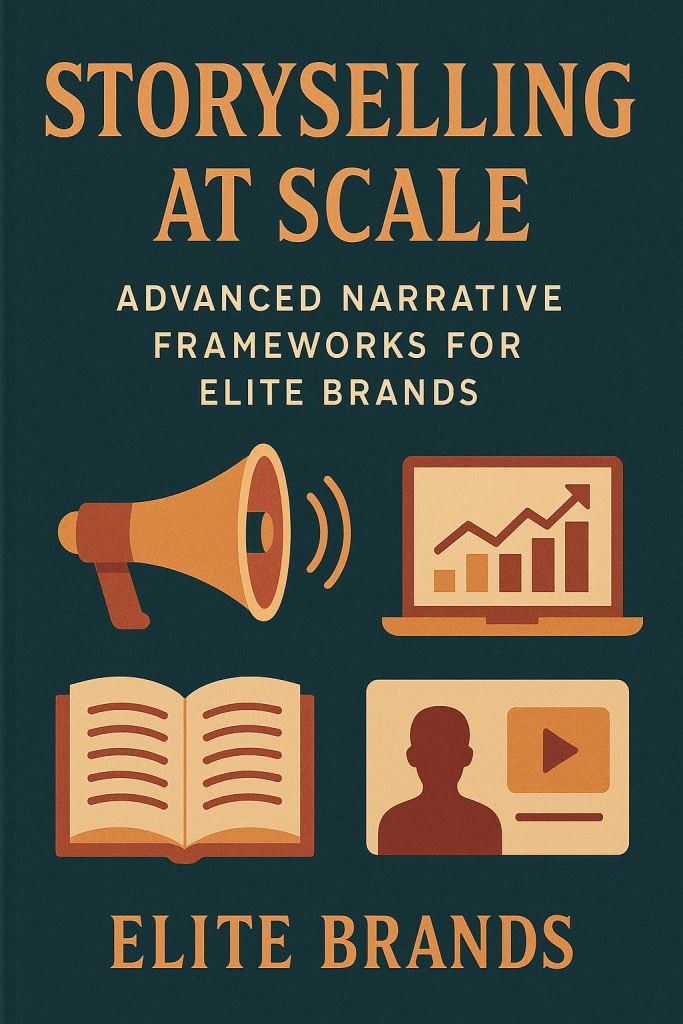
In a digital landscape dominated by endless content and constant noise, elite brands are finding it harder than ever to cut through and connect. Traditional advertising is losing its edge. Even solid storytelling isn’t enough anymore. Enter storyselling—a powerful blend of strategic storytelling and conversion-driven marketing that brings your brand’s narrative to life in ways that inspire action. Today, the most successful brands aren’t just telling stories; they’re selling them at scale. At Speeddot360, we’ve helped brands evolve by implementing brand storytelling solutions that resonate across platforms. Whether you’re developing a brand from scratch or refining a market-leading voice, this blog explores how advanced narrative frameworks can take your business from background noise to unforgettable. The Rise of Storyselling in the Age of Content Saturation We live in an age of oversaturation. Every scroll, swipe, and search bombards users with more content than they can absorb. According to recent studies, the average person sees between 6,000 and 10,000 ads per day. In this hyper-competitive climate, storytelling alone isn’t enough to drive engagement or action. That’s why storyselling is emerging as a game-changer. Unlike traditional storytelling, storyselling is engineered for impact. It’s a seamless fusion of story-driven content with specific intent—whether that’s to generate leads, nurture relationships, or convert browsers into buyers. Think of it as the evolution of narrative strategy, fine-tuned to trigger emotional engagement and decision-making in a measurable, scalable way. Social platforms like TikTok and Instagram are now functioning as search engines. Users no longer “Google” everything—they “search” with their eyes and emotions, looking for relatable content, stories, and creators. This shift forces brands to think less like broadcasters and more like publishers. And to stand out in that feed, your narrative needs to be both magnetic and actionable. Why Elite Brands Are Investing in Narrative Frameworks Elite brands understand that a consistent narrative equals consistent trust. They’re not just sharing stories—they’re building strategic content ecosystems using proven frameworks to influence perception, loyalty, and behavior. These frameworks are designed not just for storytelling but for repeatable storyselling across different buyer journeys and touchpoints. At the core of this approach is brand strategy consulting, where brand voice, values, customer motivations, and market positioning are mapped into a coherent story arc. For example, Nike doesn’t just sell shoes—they sell aspiration through every story they tell. Apple sells simplicity and innovation, not just devices. Airbnb’s story isn’t about renting homes but about “belonging anywhere.” These aren’t random narratives. They’re built using psychological and structural models that connect with audiences on a deeper level—often based on the Hero’s Journey, emotional branding techniques, or frameworks like H.E.T.A. (Hook, Empathy, Transformation, Action). Each piece of content, from a 30-second ad to a blog post, reinforces this larger narrative ecosystem. The Anatomy of Storyselling Frameworks That Scale What makes a storyselling framework “scalable”? It’s not about creating more content. It’s about creating modular stories that adapt and deploy across various formats, channels, and stages of the customer journey. At the heart of scalable frameworks is structure. One powerful model used by top content marketing agencies is the H.E.T.A. structure: Another important strategy is layered storytelling. This involves embedding mini-stories (customer testimonials, product benefits, founder stories) within a larger narrative arc. These can then be repurposed for different platforms—TikTok’s micro-narratives, YouTube’s long-form content, or email marketing campaigns. Scaling Brand Storytelling Across Social Media as a Search Engine The rise of social media as the new search engine has changed everything. Consumers now search through stories, recommendations, and trends. They want brands they can relate to, follow, and engage with—not just buy from. This trend means that storyselling must be platform-aware. The same message won’t work the same way on LinkedIn, TikTok, or Instagram. On TikTok, it’s about micro-stories and authenticity. On Instagram, it’s about visuals and mood. On LinkedIn, it’s professional credibility and purpose. Brands that invest in brand positioning services can tailor their story arcs to align with each platform’s native behavior. The goal is to create a discoverable brand narrative—one that shows up naturally in searches, feeds, and conversations without feeling forced or overly promotional. Integrating Storyselling into Your Brand Strategy To execute storyselling effectively, it must be deeply woven into your brand strategy consulting process. That means starting with your core positioning, identifying your audience’s emotional triggers, and mapping how your product or service fits into their transformation story. This process includes auditing all customer touchpoints for alignment. Is your brand voice consistent across your website, social posts, customer support, and onboarding emails? Are your testimonials reinforcing the same story arc? These details matter because inconsistency breaks the narrative—and, with it, trust. Implementing storyselling at scale also requires internal alignment. Marketing teams, sales, product developers, and even customer support should all understand and communicate the brand story. It’s not a campaign—it’s a culture. From Words to Revenue: How Storyselling Drives Conversions Here’s where storyselling shows its true power: conversions. While storytelling might entertain or engage, storyselling is engineered to move people to act. It’s designed for measurable outcomes. Emotionally resonant content increases retention and reduces bounce rates. It leads to more meaningful email marketing campaigns that actually get opened, read, and clicked. It makes landing pages more persuasive and paid ads more effective. Top brand storytelling solutions aren’t about creativity alone—they’re about performance. They blend narrative craft with marketing science, aligning stories with stages of the funnel. You’re not just telling people who you are—you’re inviting them to become part of your journey. Managing Narrative Consistency in Online Reputation Management In today’s environment, your brand’s story isn’t only what you say—it’s what others say about you. That’s why storyselling must play a role in online reputation management. Customer reviews, user-generated content, and influencer shoutouts are part of your brand narrative. When you’re intentional about storyselling, you can guide the conversation. That might mean responding to negative reviews with empathy and transformation (H.E.T.A. again) or amplifying user stories that align with your mission. Reputation isn’t built in crisis—it’s built every day, through every
How To Appear In Google Answer Box
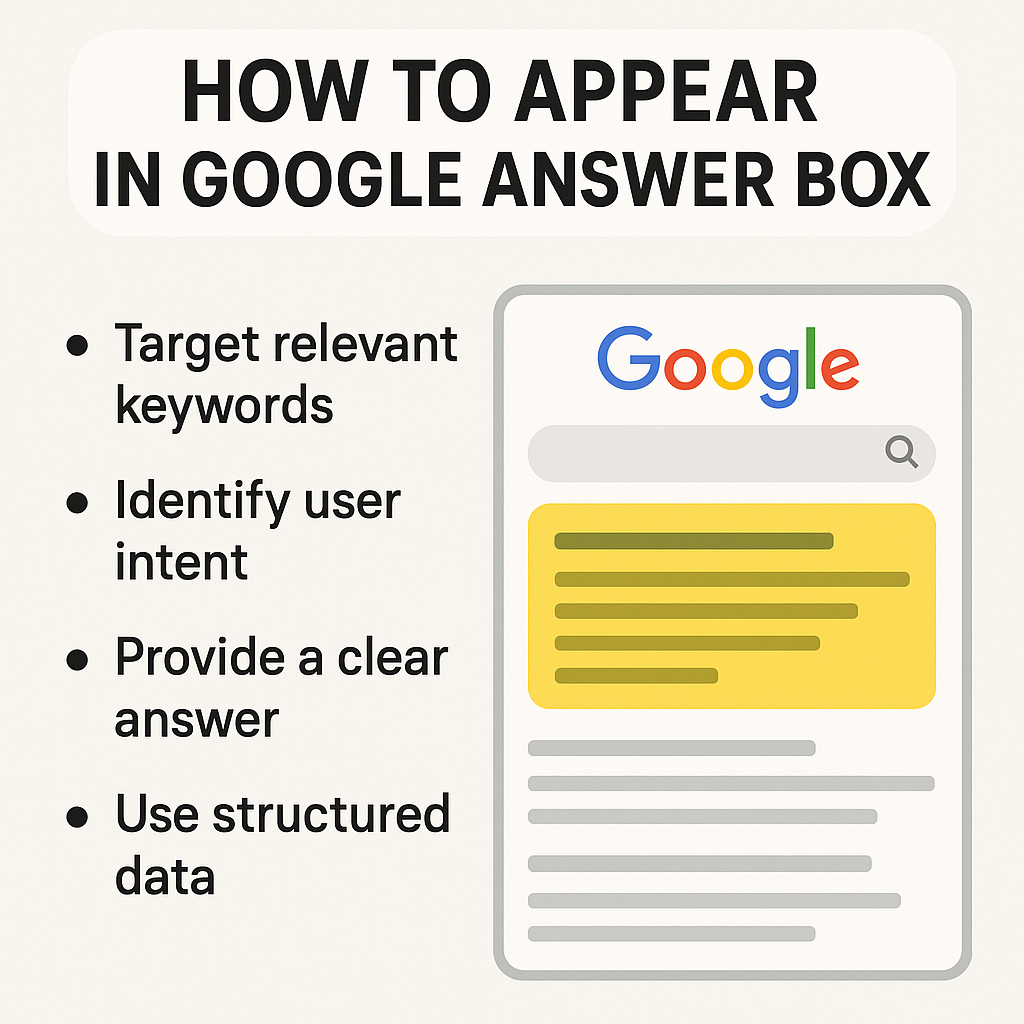
If you’ve ever searched for something on Google and found your question answered right at the top—without even needing to click a website—you’ve seen the Google Answer Box in action. Also known as the Featured Snippet, this high-profile real estate is a powerful traffic magnet. For businesses aiming to boost visibility and credibility online, showing up in the Answer Box is like winning the lottery of organic search. At Speed Dot 360, we help clients optimize their websites for smarter search performance. Appearing in that coveted box requires a combination of technical SEO, strategic content, and the kind of optimization that goes beyond basic keyword stuffing. In fact, our approach blends SEO optimization services, targeted on-page SEO strategies, and well-planned off-page SEO solutions to position content where it matters most—at the very top. But how exactly does your site land there? And what can you do differently to beat your competition to it? Let’s unpack what it takes to own the Answer Box. Understanding How the Google Answer Box Works The Answer Box is designed to quickly provide searchers with concise, accurate information pulled from a relevant web page. Google selects these featured snippets based on how well a piece of content answers a specific query. Rather than being a separate feature you can pay for, it’s entirely earned through search engine trust, structure, and quality. The box can be shown in different formats—paragraphs, lists, tables, or even videos—but the goal is always the same: deliver an immediate answer. Google pulls this data from existing pages in its index, often those that are already ranking on the first page. So the first rule of the Answer Box is this: if your page isn’t already ranking in the top 10, it’s unlikely to be featured. That’s where smart SEO planning enters the scene. Start with Intent-Driven Keyword Research One of the biggest missteps businesses make is targeting the wrong keywords. If your content isn’t aligning with question-based or informational search intent, it’s unlikely to be featured in a snippet. The key is to identify queries people are already asking—and that Google is already answering with a snippet. This is where keyword research services become essential. By using tools like Ahrefs, SEMrush, or even Google’s “People also ask” feature, we can identify opportunities where your content can directly challenge existing featured results. Rather than focusing on high-volume head terms, target long-tail keywords framed as questions. Think along the lines of “how to optimize images for SEO” or “what is responsive web design.” These are the kinds of queries that Google loves to reward with an Answer Box. Content Formatting That Speaks to Google Even the most useful content won’t land in the Answer Box if it’s not formatted in a way that Google can easily understand. This is why page structure is more important than ever. Headers should be used not just for aesthetics but to clearly signal the topic of each section. For example, if your keyword is “how to clean a DSLR camera,” you might include a heading like “Step-by-Step Guide to Cleaning a DSLR Camera” and follow it with a brief paragraph that answers the query concisely. Ideally, your answer should come within the first 100 words of that section, presented in clear, straightforward language. If the content calls for it, include numbered steps or shortlists, but the point is to get to the answer quickly. Google isn’t looking for creative writing—it wants clarity and structure. This is where on-page SEO strategies shine. Proper use of heading tags (H2, H3), schema markup, and accessible formatting make it easier for Google’s crawlers to lift your content and display it in the snippet. Write for Humans, But Optimize for Search Engines Many brands fall into the trap of writing strictly for algorithms. However, the secret to snippet success lies in writing content that performs well for both search engines and human readers. That means being informative without being robotic and educational without overwhelming your audience. The sweet spot lies in a balance: conversational tone, helpful insights, and keyword relevance. Each section of your content should be self-contained enough that it can stand on its own because Google is rarely quoting entire articles. It’s selecting tight excerpts that directly answer a question. If your content meanders, gets buried in long intros or requires scrolling to find an answer, it’s less likely to be considered. That’s why working with a team that provides professional SEO optimization services can help streamline your copy for both performance and readability. Build Authority Beyond the Page It’s easy to forget that off-site signals still influence your chances of earning a featured snippet. While Google doesn’t just hand out Answer Boxes to whoever has the most backlinks, domain authority certainly plays a role. If your website has earned high-quality backlinks, positive brand mentions, and strong engagement signals, you’ll appear more trustworthy to Google’s algorithm. This makes it more likely that your content will be chosen for special features like snippets. This is where off-page SEO solutions come into play. Link-building, guest blogging, digital PR, and consistent citation across the web all contribute to the overall authority of your domain. Think of it this way: Google wants to surface the most reliable source. So even if your content is better structured than a competitor’s, if their domain carries more authority, they’ll probably win the snippet—unless you take steps to even the playing field. Leverage the FAQ Section An often-overlooked tactic is embedding a dedicated FAQ section into your blog posts or landing pages. When you frame questions using headers and immediately answer them below, you’re practically handing Google the content it wants to feature. It also helps you organically target several queries within one page. For example, a blog post on SEO basics might include sub-questions like “What is on-page SEO?” or “Why is keyword research important for SEO?” Each of these can serve as standalone opportunities to appear in Google’s Answer Box. Moreover, incorporating structured data (FAQ
Exploring Cost Per Mille (CPM) | What Is CPM Bidding?
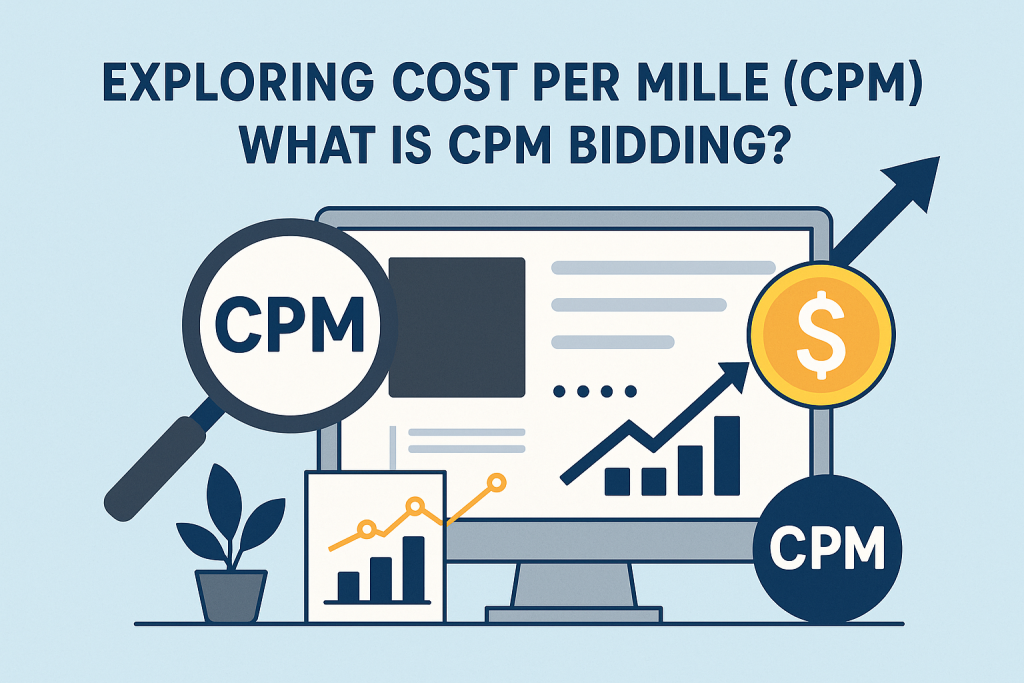
Picture this: your brand’s eye-catching ad pops up in front of thousands of potential customers. No clicks, no purchases—just eyeballs. You might think, “What’s the point? ” But in the world of digital marketing, visibility is currency, and impressions can be just as valuable as conversions—when you know how to leverage them. This is the essence of Cost Per Mille (CPM) advertising. It’s not about chasing clicks; it’s about planting seeds. Whether you’re launching a new product or boosting brand recall, CPM is the metric that tells you how much you’re paying to get your brand in front of 1,000 people. At Speed Dot 360, we’ve seen firsthand how strategic CPM campaigns—backed by smart PPC advertising management—can amplify digital presence and build long-term brand equity. But there’s more to CPM than just impressions. To use it effectively, you need to understand how it works, when to use it, and how to bid wisely. Let’s unpack everything you need to know about CPM and CPM bidding and how it fits into your broader digital strategy. What Is Cost Per Mille (CPM)? Cost Per Mille, commonly referred to as CPM, is an advertising metric that reflects how much an advertiser pays for 1,000 ad impressions. The term “mille” means “thousand” in Latin, which is why you’ll often see CPM discussed in reference to views, not clicks. If your CPM is $6, that means you’re paying $6 every time your ad is displayed 1,000 times, regardless of whether anyone engages with it. CPM is foundational in campaigns focused on brand awareness, not immediate conversion. This metric is widely used in display advertising, video ads, social media promotions, and mobile campaigns. It’s favored by marketers who want to make sure their brand is seen by the right audience—even if it doesn’t lead to an instant action. Why Is CPM Important in Digital Campaigns? While metrics like CPC (Cost Per Click) and CPA (Cost Per Acquisition) get most of the attention for conversion-focused efforts, CPM is the go-to for visibility. It supports the top of the funnel—when your goal is to introduce your brand, build recognition, and generate familiarity before someone clicks. A campaign optimized for CPM helps you do things like promote a new product, highlight a seasonal offer, or run a compelling video on platforms like YouTube or Facebook. This is especially relevant for a digital branding agency looking to help clients establish market presence at scale. Think of CPM as the fuel for recall. The more people see your message, the more likely they are to remember it when it’s time to make a decision. How to Calculate CPM The calculation for CPM is straightforward and assists you in evaluating the competence of your ad expenditure: CPM = (Total Campaign Cost ÷ Total Impressions) × 1,000 For example, if you spent $500 and received 100,000 impressions, your CPM is: (500 ÷ 100,000) × 1,000 = $5.00 This tells you that you’re spending $5 to reach 1,000 viewers. You can use this figure to compare platforms, creatives, or targeting methods, helping refine your strategy based on ROI and visibility impact. What Is CPM Bidding? CPM bidding is the method by which advertisers compete in digital ad auctions based on the amount they’re willing to pay per 1,000 impressions. In contrast to CPC bidding (which focuses on clicks), CPM bidding simply says: “Here’s what I’ll pay to be seen.” There are two common types of CPM bidding: Manual CPM With manual CPM bidding, you decide the maximum amount you’re willing to pay per 1,000 views. This gives you control but also requires constant optimization to avoid underspending or overspending in competitive environments. Viewable CPM (vCPM) In this model, you’re only charged when your ad is actually visible on the screen for a specific time period (typically one second or more). This ensures that you’re not paying for impressions that users never actually see—such as those hidden below the fold. Both bidding options are useful depending on your goals, and both are staples in advanced PPC advertising management strategies. CPM vs CPC vs CPA: Choosing the Right Model Each bidding model serves a different marketing goal. A smart campaign often blends these bidding strategies. For example, you might use CPM to introduce a product, CPC to drive traffic to a landing page, and CPA to close sales. When Should You Use CPM? CPM is a strong fit for campaigns that are designed to: If you’re working with a digital branding agency, you’ll often see CPM strategies used in pre-launch or rebranding phases, when it’s essential that your audience becomes familiar with your identity before you begin pushing for conversions. Benefits and Drawbacks of CPM Campaigns The main benefit of CPM is its cost-effective reach. If your targeting is dialed in and your creative is engaging, you can get your brand in front of thousands for a relatively low cost. It also makes campaign performance easy to benchmark since you’re measuring visibility rather than engagement. That said, CPM campaigns are not built for quick wins. Because you’re not paying based on clicks or actions, ROI may take longer to track, and your success is directly proportional to the potential of your ad design and targeting. That’s why partnering with experts in PPC advertising management can help you fine-tune the performance of your campaigns—balancing visibility with strategic intent. Tips for Running a High-Impact CPM Campaign To succeed with CPM, it’s not enough to throw money at impressions. Your ad creative must be visually striking and aligned with your messaging goals. Headlines, imagery, and design should stop the scroll and resonate within seconds. Audience targeting is equally critical. Even the best ads underperform when delivered to the wrong people. Use precise demographic, behavioral, and geographic filters to ensure relevance. Lastly, always test. Run A/B tests with different creatives, ad placements, and audience segments. CPM is all about scale, and scaling what works starts with iteration. Final Thoughts: Visibility That Converts While CPM isn’t always the right choice




